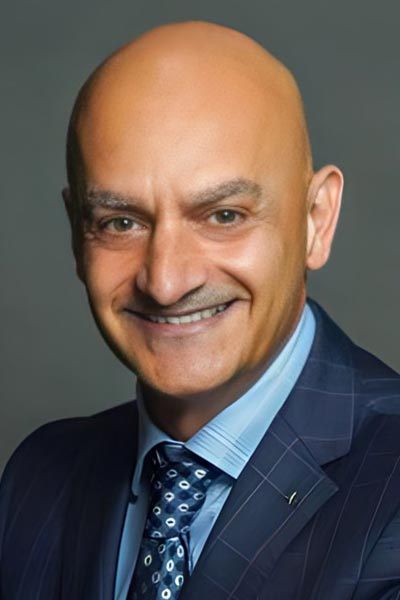
As evidence for the use of neoadjuvant chemoimmunotherapy for the treatment of resectable non-small cell lung cancer (NSCLC) grows, questions remain about its potential implications on the surgery that follows.
On April 1, Dr Alex Brunelli, MD, consultant thoracic surgeon and honorary associate professor at St. James’s University Hospital, Leeds, UK, addressed common concerns related to neoadjuvant therapies during the 2023 European Lung Cancer Congress.
“We are now in a different era, that of immunotherapy,” Dr. Brunelli said. “We know that immunotherapy has proven highly effective in extending overall survival in the metastatic and locally advanced, unresectable patients, and there is an ongoing effort to bring this same benefit to patients with resectable disease, including those in the early stage of disease with neoadjuvant and adjuvant treatment.”
During his talk, Dr. Brunelli explored what the literature says about neoadjuvant treatments and surgical complexity. He reviewed a study by Feldman et al,1 which looked at what surgeons found intraoperatively following neoadjuvant therapy.
What they found was when the tumor status included N1 disease or when the chemotherapy caused node reduction of more than 30%, then surgeons might encounter increased complexity, he said. For instance, he said surgeons might find a node fixed to the pulmonary artery or might need to change the surgical strategy or include proximal control of the pulmonary artery. He noted that these features could also cause a surgeon to convert from a minimally invasive strategy to an open thoracotomy. Furthermore, they found that these complexities applied to those who received standard chemotherapy and to those receiving immunotherapy.
A similar analysis in press by Mathey-Andrews et al specifically focused on immunotherapy.2
“What they found was that neoadjuvant immunotherapy compared to standard neoadjuvant chemotherapy—after propensity score match—did not increase the rate of conversion, length of stay, 30-day mortality, or 90-day mortality,” Dr. Brunelli said.
He went on to review data from several neoadjuvant immunotherapy trials, including COLUMBIA, CheckMate 816, NADIM II, and NEOSTAR. As he reviewed the data, some recurring themes emerged.
“In all these studies, we have 10% to 12% of patients who basically fell off and were not able to proceed to surgery either because of disease progression, a drop in performance status or complications,” Dr. Brunelli said. One exception was CheckMate 816, where 17% of stage IIIA patients did not undergo surgery following neoadjuvant chemoimmunotherapy.
Still, he said, these are not unexpected percentages of patients, making pre-existing concerns that neoadjuvant immunotherapy might prevent patients from reaching surgery unfounded.
He also addressed concerns that neoadjuvant therapy might delay surgery or result in more surgery-related adverse events.
Dr. Brunelli said it is also important to consider the delay of surgery by stage and to remember that delay of surgery in CheckMate 816 was defined as surgery performed after 6 weeks as 6 weeks was the recommended window after treatment. For stage IIIA, 23% of patients in the immunotherapy group had delayed surgery. The majority of these surgeries happened within 2 weeks of the 6-week window, he said.
The majority of stage III patients underwent minimally invasive thoracotomy or an open approach, he said.
“More patients had or started with minimally invasive approach in the immunotherapy group, and the conversion rate was lower than in the chemotherapy group,” Dr. Brunelli said. “Note the fact that the complexity of surgery was not worse than in the standard chemotherapy group. The majority of patients underwent lobectomy in the immunotherapy group, but many more pneumonectomies were performed in the chemotherapy group.”
In addition, completeness of resection was better after immunotherapy in CheckMate 816, and there was no difference in length of stay or surgery-related adverse events.
“So, in general neoadjuvant chemoimmunotherapy is well tolerated,” Dr. Brunelli said. “The delay to surgery is within an expected window and most patients proceed to surgery. A very reasonable proportion of patients have treatment-related adverse events, and we see good rates of major pathologic response and complete pathological response.”
However, he said patient fitness and patient preference should be considered, and radiotherapy—in combination with chemotherapy and/or immunotherapy—should be regarded as a valuable alternative in patients deemed unfit or too high risk for surgery and for those who decline surgery.
References
- 1. Feldman HA, Zhou N, Deboever N, Hofstetter W, Mehran R, Rajaram R, Rice D, Roth JA, Sepesi B, Swisher S, Vaporciyan A, Walsh G, Godoy M, Strange C, Antonoff MB. Intraoperative challenges after induction therapy for non-small cell lung cancer: Effect of nodal disease on technical complexity. JTCVS Open. 2022 Oct 25;12:372-384. doi: 10.1016/j.xjon.2022.09.012. PMID: 36590745; PMCID: PMC9801337. 2. Mathey-Andrews C, McCarthy M, Potter AL, et al. Safety and feasibility of minimally invasive lobectomy after neoadjuvant immunotherapy for non-small cell lung cancer [published online ahead of print, 2022 Dec 16]. J Thorac Cardiovasc Surg. 2022;S0022-5223(22)01342-3. doi:10.1016/j.jtcvs.2022.12.006
- 2. Mathey-Andrews C, McCarthy M, Potter AL, et al. Safety and feasibility of minimally invasive lobectomy after neoadjuvant immunotherapy for non-small cell lung cancer [published online ahead of print, 2022 Dec 16]. J Thorac Cardiovasc Surg. 2022;S0022-5223(22)01342-3. doi:10.1016/j.jtcvs.2022.12.006





